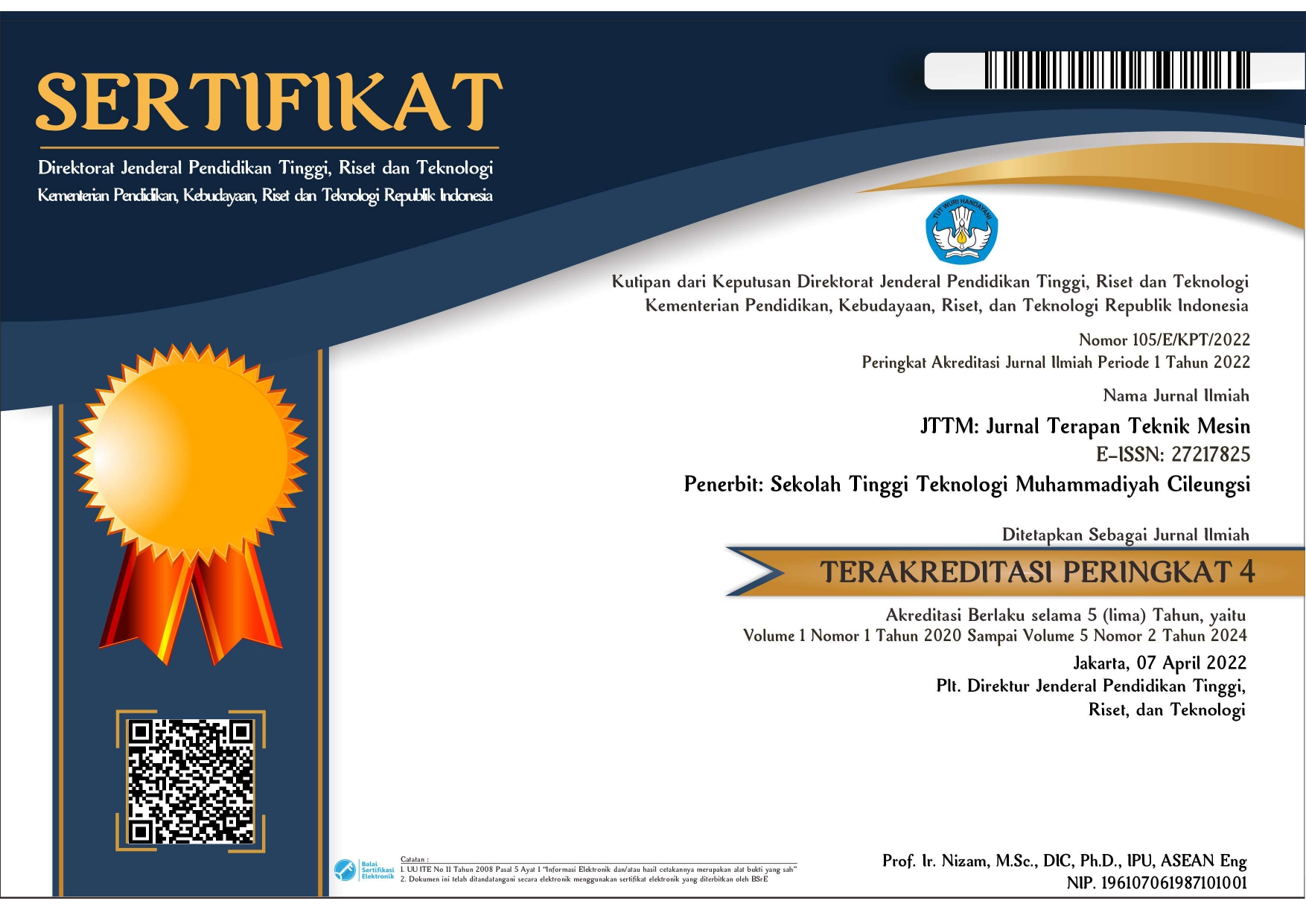Analysis of the effect of a spring constant of 980 N/m on a wave energy converter device due to heaving
Abstract
Indonesia is a country with a larger sea area compared to its land area. Therefore, utilizing ocean current or wave energy as a renewable energy source, specifically for generating electricity through Wave Energy Converters (WEC), is a suitable solution. Wave Energy Converters (WEC) work on the basic principle of converting wave energy into linear motion or rotation to drive a generator and then convert it into electricity. The rotation is generated by the up-and-down movement of the pontoon affected by the pontoon's spring constant, which originates from sea waves. Hence, this study aims to analyze the effect of the spring constant on the pontoon due to heaving motion in response to sea waves. The study uses a spring constant of 980 N/m and is conducted with and without a planetary gear system. The highest voltage and current were achieved at a wave height of 0.35 m, producing a voltage of 84.5 V with a current of 8.26 A and a power of 698 Watts for the generator with the planetary system. For the generator without the planetary system, it produced a voltage of 1.73 V with a current of 0.046 A and a power of 0.0795 Watts with a gearbox shaft rotation of 37.32 RPM. The lowest voltage and current were observed at a wave height of 0.15 m, producing a voltage of 39.6 V with a current of 3.58 A and a power of 141.8 Watts for the generator with the planetary system. For the generator without the planetary system, it produced a voltage of 0.53 V with a current of 0.021 A and a power of 0.0111 Watts with a gearbox shaft rotation of 21.62 RPM
Copyright (c) 2024 Muhamad Fadhil Faali, Dimas Suharto, Agung Dwi Prasetya, Abdul Hamid, Subekti Subekti

This work is licensed under a Creative Commons Attribution-NonCommercial 4.0 International License.











